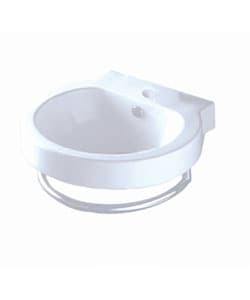... I need a bathtub, which one should I choose?
My
Sanijet fantasies have come to naught. The narrowest models need at least 31.5" width to install. My current tub is a little less than 29" wide, and it's already a tight squeeze. I don't have the extra inches. And I'm not crazy about the only two models that would sort-of-almost-fit, and they're awfully expensive for so awkward a compromise.
Funny how quickly I get over things. I discovered Sanijet several years ago - I picked out the one I liked best back when my mother was contemplating adding a second bathroom - practically my first thought, in buying this apartment to renovate, was "Oooh good! Finally I can get my Sanijet!" (I even specifically asked if it would be permitted by the alteration agreement, before I went into contract.) And now here I am, drowning that little dream in the bathtub (so to speak) without too much regret. (Of course if my contractor says we can squeeze a few extra inches out of the back wall, all bets are off.)
Maybe one of my friends will buy one and let me try it out.
Meanwhile, back to the bathroom I've got. Here's a picture (don't laugh) -
The tub in the picture is 66" long and a little less than 29" wide. The sink is 19" front to back and 25" wide. The toilet bowl (without seat) is about 14.5" wide, and yes that's a wall you see just to the right of the toilet. On the other hand, the window behind the toilet is gloriously enormous - it extends 7.5' up the wall. Right now it's totally covered with brown woodgrain contact paper (I kid you not) but I expect that it will get some filtered light.
The faucets - as you can see - are on the wall to the side of the tub. The showerhead is on the same wall as the window. And the drain is at the end of the tub near the sink, not at the end of the tub near the showerhead. (Why???)
These are the dimensions I'm stuck with, and I can't move the fixtures around. The unit I saw at the open house just left the original tub and reglazed it. My problem with that is 1) it's too shallow, and 2) my tub's in bad shape.
No, I do NOT want a stall shower. I'm a bath person. I need a tub I can lie down in, and be covered in bubbles. I checked out of a hotel once because it had no bathtub; I'm not going to live without one in my own house.
So what bathtub will fit? The standard width these days is 30" or 32". One option, interestingly enough, is a clawfoot or slipper tub. Like this:
28" wide, 63" long, water 14" deep. Happy. The high end would go by the window. Which gives you less elbow room when you're sitting on the toilet, but c'est la vie.
There's a slightly narrower model - only 25" wide - but would it be comfortable? Especially for showering?
A slipper tub like one of these would look cute. It has a nice backrest design, and it holds deep water. I had a clawfoot tub (though not slipper) when I lived in DC, long and wide enough for me to do a dead man's float without touching the sides. I spent countless happy hours in it studying - my Gilbert's outlines got all wiggly from being wet.
And then there's this one. It's named for me - "Susanna" - and it even comes as an airjet tub (though I don't think for me, since I'm not sure the building would allow an airjet and I have no idea where I'd fit the mechanicals).
Stunning, ain't it? And it would fit (28" wide, 66" long). Though it needs a bigger room to show it off. And it weighs, and costs, a lot - it's solid resin, not hollow acrylic like the others.
I'm assuming I can't even think about cast iron. This is a great size and shape - 67" long, 27.5" wide, super deep) but it weighs 324 pounds
empty -
- but wait! I just found an
acrylic version of the same tub.
All of these tubs would need a shower curtain - they're not shaped right for glass doors. The trouble with shower curtains is that they stick to you (static electricity, or laminar flow, or something). And with an acrylic rather than metal tub, you can't even tame the curtain with magnets in the hem. Also, you end up making custom shower curtains - sewing several curtains and liners together, or starting fresh with fabric, to get two sides around the tub. (Though with a 5+ foot long tub, do I really need to curtain the far end?) And where does all the stupid bulky curtain go when you're not taking a shower? Smushed in front of the window?
Or I could go totally nuts and get a
folding tub screen.
Also, it's a steep step up getting into and out of the shower (but you get used to it), and it's trouble to clean underneath the tub.
The other choice is a more conventional bathtub, but narrow enough and deep. There's a German company called
Kaldewei (everything tiny is European) that makes bathtubs a small as 27.5" wide and 16" deep. Duravit has some pretty narrow ones too. With those I could use sliding shower doors (no space for a hinged door). I'd rather have doors - but then the toilet would be like a phone booth, with hard high walls hemming it in on both sides.
Hmmmm.
















































